When we look at the Hisense E7NQ PRO in everyday use, it is immediately apparent that this is a television designed with a broad range of viewers in mind. The picture, although not breathtaking at first glance, gains a lot after proper calibration. The colours appear more natural, and a brightness level of around 500 cd/m² makes it comfortable to watch in a sunlit living room. The wide viewing angles offered by the IPS panel are an additional plus – we no longer have to fight for the best spot on the sofa. Dolby Vision can enhance the overall experience, and in SDR mode, the television delivers a truly pleasant image. Sports and gaming fans will find even more reasons to be satisfied here. High refresh rates (144 Hz) guarantee smooth ball movements on the pitch, while low latency, VRR, ALLM, and compatibility with G-Sync and Dolby Vision in games cater to those who value responsiveness and immersive gaming experiences. Because of all this, the E7NQ PRO becomes an interesting proposition for computer gamers as well. The VIDAA system works quite well – there are plenty of applications, although it lacks music-specific ones like Spotify or Tidal. However, you can expect recording, AirPlay, mirroring, and decent cooperation with wireless devices. Yes, there are certain shortcomings and imperfections – especially regarding subtitle support from USB or perfect management of brightness and contrast, and the absence of HGIG may disappoint the most demanding gamers. When we gather all the impressions and experiences, the E7NQ PRO emerges as a device that will perform well in many situations. It has its advantages – such as wide viewing angles, pleasant images after calibration, numerous additional functions, and excellent motion fluidity in sports or games. At the same time, it is important to remember that this is not a television intended for those seeking perfect experiences for evening viewings in total darkness. In low lighting, the deficiencies in contrast and black levels become more pronounced, so we suggest that individuals who primarily plan evening screenings look for alternatives among competitors. Nevertheless, as a versatile solution for everyday use – from watching television in a bright living room to playing console and computer games – the E7NQ PRO performs really solidly.
- Matching (Score)
- Our verdict
- TV appearance
- Where to buy
- Contrast and black detail
- HDR effect quality
- Factory color reproduction
- Color reproduction after calibration
- Smoothness of tonal transitions
- Image scaling and smoothness of tonal transitions
- Blur and motion smoothness
- Console compatibility and gaming features
- Input lag
- Compatibility with PC
- Viewing angles
- TV efficiency during daytime
- Details about the matrix
- TV features
- Apps
- Playing files from USB
- Sound
Hisense E7NQ PRO vs LG OLED G5
Direct compare
G54 / G51 / G55 / LW / LS

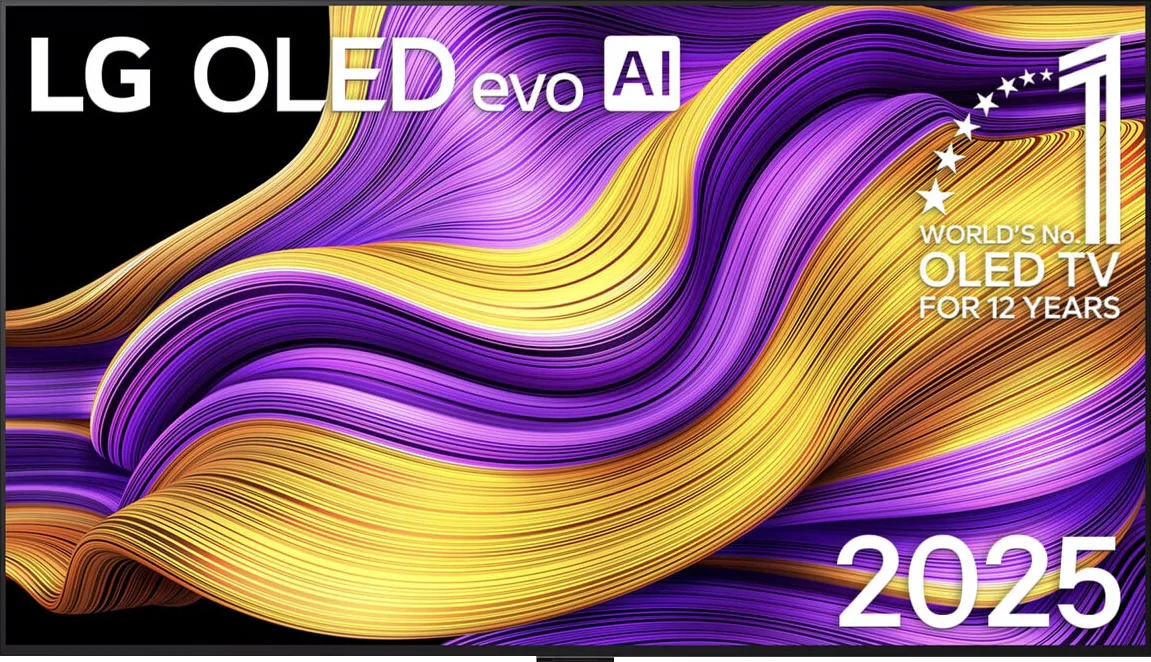
Panel type: LCD IPS
Resolution: 3840x2160
System: VIDAA
Model year: 2024
Complete the survey to find out the result

Panel type: WRGB OLED
Resolution: 3840x2160
System: WebOS
Model year: 2025
Complete the survey to find out the result

Overall rating
7.0
8.9
Movies and series in UHD quality
6.4
9.2
Classic TV, YouTube
6.3
9.2
Sports broadcasts (TV and apps)
6.6
9.0
Gaming on console
8.0
9.6
TV as a computer monitor
7.6
8.8
Watching in bright light
6.2
8.0
Utility functions
8.9
8.5
Apps
7.7
9.1
Sound quality
7.0
8.7
Complete the survey to find out what fits your preferences
Advantages
Wide viewing angles thanks to the IPS panel
Good colour potential after calibration
High refresh rate (144 Hz), VRR, ALLM and G-Sync for gamers
Support for Dolby Vision
A considerable number of additional features (recording, AirPlay, mirroring)
Support for key audio formats (Dolby Atmos, DTS:X)
Relatively low input lag
Amazing black and contrast
Reference colour reproduction after calibration
Very high brightness in HDR materials
Excellent collaboration with consoles and computers
Great motion smoothness - OLED panel 165Hz
Many features for gamers: VRR, ALLM, HGIG, low input lag
Great operating system WebOS with many applications
Superb control thanks to the Magic remote with "pointer" function
Disadvantages
Average contrast and black level
Issues with subtitle playback from USB
Missing support for HGIG
Brightness management issues in HDR in some scenes
Unavailability of some popular music applications (Spotify, Tidal)
No support for DTS audio format
Worse (though still good) viewing angles than its predecessor G4
Different versions of the remote in derivative models – it's hard to predict which version we will get
Our verdict
The LG G5 is a television that not only continues but also enhances what we loved about the previous models in the G series. Instead of following the beaten path, LG opted for a new Tandem OLED panel – and it was a resounding success. Brightness? Simply, PH E N O M E N A L. HDR effect? Close to reference. Colours after calibration? Almost perfect. Motion fluidity, low latency, and features for gamers? At an absolutely top level. The G5 performs well both in films and games, day and night, with a decoder, console, PC, or even just the remote. Of course – it is not a product without flaws. It’s a shame there is no support for DTS, viewing angles have worsened compared to its predecessor, and the remote may vary depending on the version. However, when we look at the overall picture, it is hard not to feel that this is one of the best OLED televisions available on the market, and perhaps the best. Certainly, when it comes to its versatility and image quality without having to reach for the extremely expensive models of the competition. If you are looking for a television for everything – cinema, gaming, bright living rooms, watching online content or connecting a computer – the LG G5 is a device that simply delivers on every front without compromises.
TV appearance




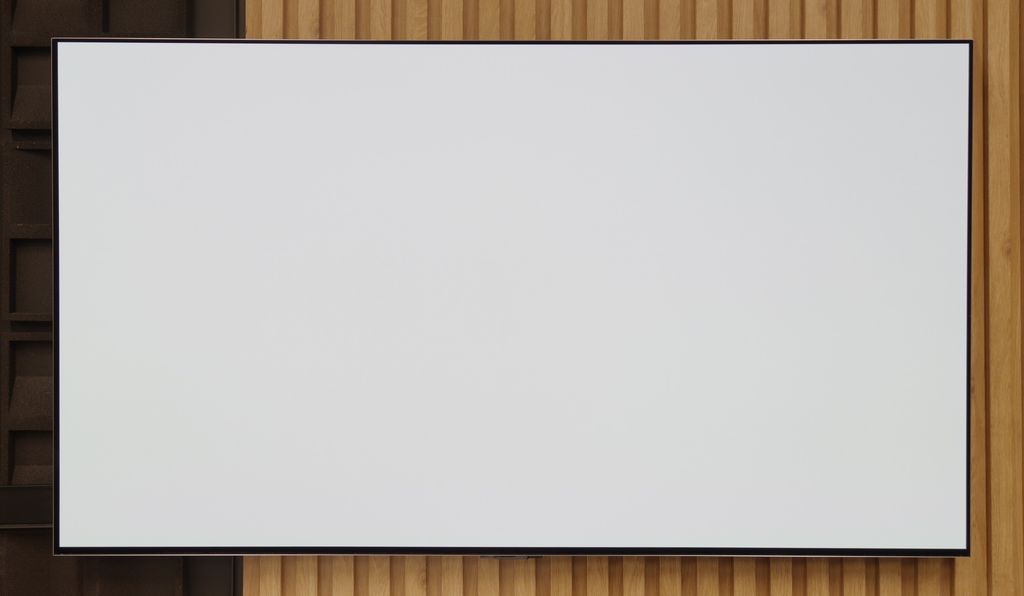
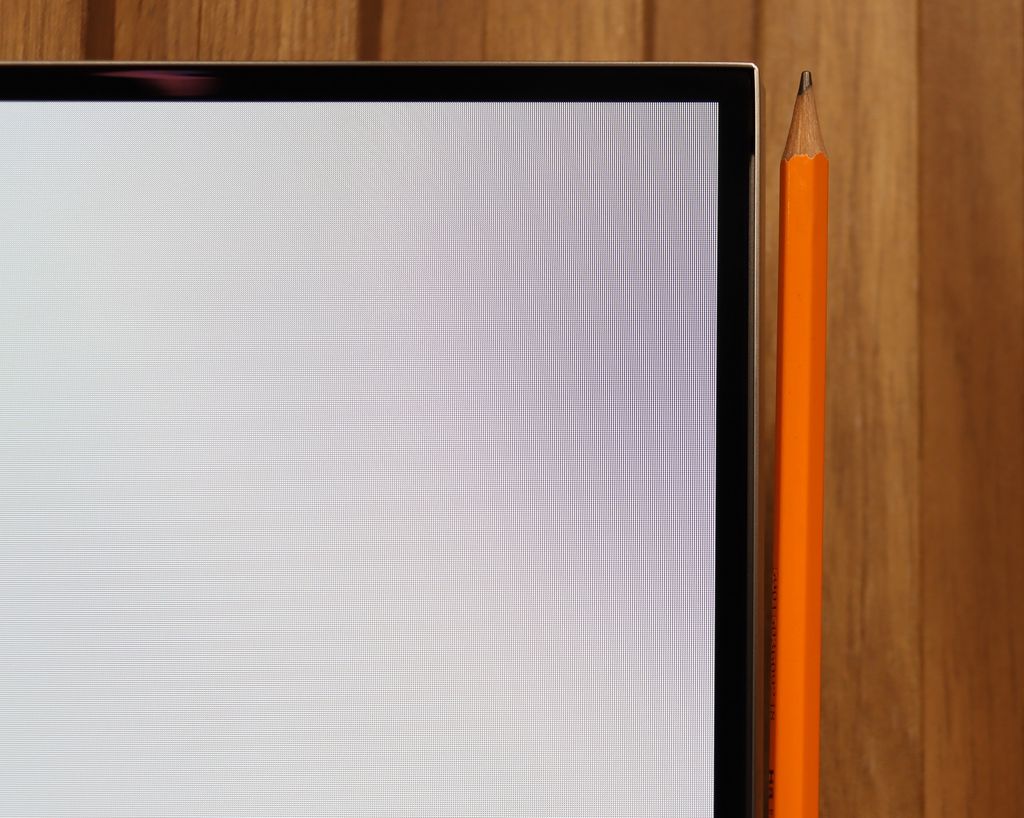
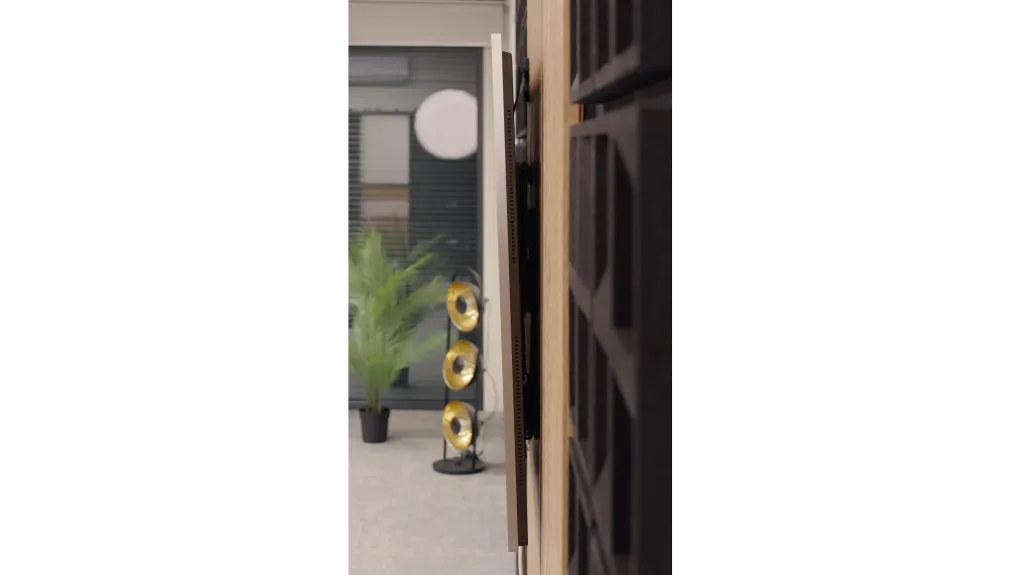
Contrast and black detail
5/10
10/10
Local dimming function: Yes, number of zones: 32 (4 x 8)
Contrast:

Result
7,850:1

Result
4,150:1

Result
4,400:1

Result
2,500:1

Result
1,550:1

Result
∞:1

Result
∞:1

Result
∞:1

Result
∞:1

Result
∞:1
Halo effect and black detail visibility:

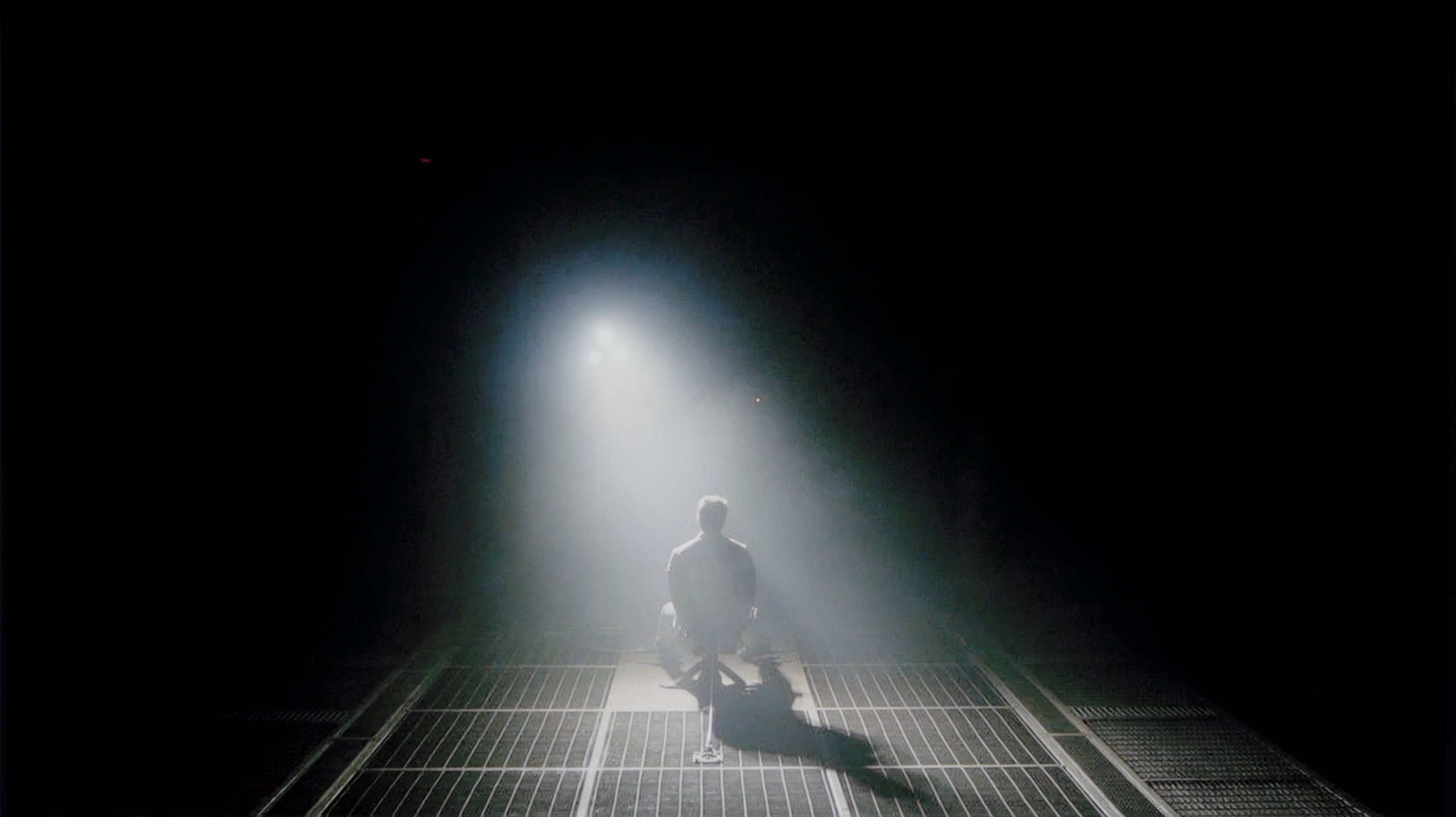
The tested Hisense E7NQ PRO in the 65-inch version features an IPS panel, which unfortunately is not known for high contrast. As a result, black appears slightly 'washed out' and at times takes on a silvery hue, which is clearly visible in our pictures. The manufacturer tried to address this by equipping the television with local dimming functionality. Unfortunately, in this 65-inch model, we only have 32 zones available, which, while somewhat helpful, is definitely not enough to achieve impressively high results—especially since the panel itself is unable to deliver incredibly deep blacks.
During testing, we observed highly variable results. In optimal conditions, it managed to reach around 7800:1, which can be considered decent; however, in more challenging scenes, the contrast dropped to around 2000:1. Such values are at best average and simply do not befit a television in this price range. Ultimately, while local dimming somewhat salvages the situation, it lacks truly deep, inky blacks and contrast that would leave a greater impression on us.
LG G5, as befits an OLED television, impresses with its quality of contrast and blackness. In scenes with a lot of dark areas, the screen looks almost perfect, offering deep, absolute black and infinite contrast – an effect that still cannot be achieved on any LCD television. The new Tandem OLED panel does not introduce any negative changes compared to previous generations – blacks are flawless regardless of the content. Watching scenes from films like The Revenant or Oblivion, the excellent separation of lights is clearly visible, without any halo effect or brightening of dark areas. In this category, the LG G5 deserves the highest rating.
HDR effect quality
5.1/10
9.1/10
Luminance measurements in HDR:

Result
408 nit

Result
299 nit

Result
446 nit

Result
215 nit

Result
527 nit

Result
2346 nit

Result
2353 nit

Result
2399 nit

Result
2353 nit

Result
2012 nit
Scene from the movie “Pan” (about 2800 nits)


Scene from the movie “Billy Lynn” (about 1100 nits)


Static HDR10


Dynamic: Dolby Vision
Dynamic: Dolby Vision


HDR luminance chart:
LG OLED G5
HDR luminance
Luminance of RGB colors
Hisense E7NQ PRO
HDR luminance
Based on the luminance chart, which indicates around 550 nits, it can be said that Hisense E7NQ PRO theoretically has the potential to somewhat "magically" enchant us with its image in HDR. While testing various scenes from films, we noticed that the television continually tries to balance maintaining appropriate brightness with preserving the deepest blacks possible. In favourable conditions – for instance, during a scene from “The Meg,” where the screen is flooded with bright light – this brightness can indeed impress us. In such moments, we feel that HDR actually adds that "something" to the image. Unfortunately, when more challenging shots appear on the screen with small, bright elements on a dark background, the situation looks significantly worse. The brightness then drops to 200-300 nits, which is decidedly too little to truly distinguish HDR from standard SDR.
It is clear that the television tries, but hardware limitations – mainly the limited number of local dimming zones – prevent it from fully spreading its wings. The final effect is therefore often quite uneven and just as mediocre as in the contrast tests. However, it deserves credit for its impressive coverage of the DCI-P3 colour gamut at 97%. Thanks to this, the television can display a truly wide range of colours, which, in suitable scenes, can give us at least a taste of the true HDR effect. It’s just a shame that the overall experience is not complemented by better control of brightness and contrast.
LG G5 with the new Tandem OLED matrix brings the biggest change in terms of the brightness of the television. And it's substantial. This is truly an astronomically bright OLED. In every scene tested – whether it was point lights or full-screen whites from the film The Meg – the brightness on the G5 exceeded 2000 nits. Just a year ago, such values on an OLED were simply unimaginable. And here we are – the G5 is approaching, and at times even surpassing, the best Mini-LEDs on the market. A new feature of the Tandem OLED matrix is also the expanded colour gamut – and here the LG G5 performs almost perfectly. DCI-P3 reaches a full 100%, and BT.2020 is maintained at around 83%. These are some of the highest values currently available on the market – it's hard to find any other television that comes close to such results, unless we are talking about the best displays with QD-OLED panels. The G5 has nearly reference-quality HDR – both in terms of brightness and colour saturation. This is an OLED that can truly shine – and not just figuratively.
Factory color reproduction
5/10
7.8/10


Factory Mode
After calibration


Factory Mode
After calibration
When we took our copy of Hisense E7NQ PRO out of the box, we immediately began to check the available picture modes. Among them, the Filmmaker mode seemed the most promising, although it too was not without its flaws. With standard SDR content, we noticed a clear tendency for excessive red enhancement, which made the image unnaturally warm. This was particularly evident in the comparative photo attached below. Conversely, when we switched to HDR content, the situation went in the opposite direction. This time, blue was dominant, and red was scarce, resulting in a cool effect, at times almost "shop-like" — although not as drastic as in those modes that are actually intended for display in exhibitions. As a result, in our tests assessing colour reproduction, these disturbances in colour balance led to significant errors.
Additionally, the television had issues with reproducing brightness characteristics. At lower resolutions, it noticeably brightened the darkest elements of the image, and with HDR content, the brightness curve (eotf) simply wouldn't conform as it should. Initially, the television excessively darkened the smallest details, only to then overly brighten larger areas. Fortunately, the E7NQ PRO provides us with plenty of calibration tools, so knowing that there is potential within it, we decided to take matters into our own hands and try to adjust it to eliminate these problems.
Our test unit, the LG G5, struggled with certain issues in the factory Filmmaker mode. And although most people might have found the picture acceptable, we knew that this television was capable of much more. This mode had a clear excess of blue tint in the white balance, resulting in a significantly cooled image – particularly in HDR modes, where there was additionally a lack of red. The picture appeared cold, and its sharpness was artificially boosted and unnatural. Another significant issue was the brightness characteristics. In SDR content, the situation wasn't the worst, aside from a slight dimming of the entire image. However, it performed much worse in HDR materials – due to improper brightness management, the smallest details could completely disappear from the image, while larger, bright elements looked overexposed and lacking in gradation. Fortunately, the G5 supports calibration using 3D LUT (a tool for professionals for colour calibration), so we decided to make use of its professional capabilities and see what it could really do. Because although it wasn't tragic even before calibration, the potential of this television definitely deserved more.
Color reproduction after calibration
7.1/10
9.8/10




Thanks to the tools available in E7NQ PRO, we managed to extract quite a decent image from it, especially with lower quality content. After refining the white balance of the SDR materials, the colours look much more natural, and what we see on the screen seems closer to the vision that the manufacturer intended to present. Additionally, we improved the brightness characteristic (Gamma), which means the television is no longer prone to excessive brightening, and everything presents itself distinctly better than before our intervention.
We also managed to achieve some results with HDR materials, although it isn’t quite as rosy here. Indeed, the white balance has approached an acceptable level, but the problem lies elsewhere. It concerns the EOTF curve, which is the way the television manages brightness and tonal range of the image. At first glance, it might seem that the biggest issue only relates to mid-tones being overly brightened. However, after more detailed testing and enabling the filters for displaying the EOTF curve, it becomes apparent that the receiver tends to brighten the entire screen. This appears to be a limitation arising from the small number of local dimming zones and generally modest brightness management capabilities. Such hardware limitations are simply insurmountable. Despite this, after our calibration, the image is noticeably better than at the outset. One just needs to be aware that in terms of contrast and brightness management, this model has its limits, which even good calibration cannot fully overcome.
After performing the calibration process using professional tools, we can confidently state that the LG G5 offers nearly reference-quality image. Most of the errors related to white balance and the ColorChecker test are below a value of 2, which is a phenomenal result, practically imperceptible to the human eye. And while one could still nitpick that in HDR films the television still has a tendency to slightly dim the smallest elements of the image, in practice this does not negatively affect the overall impression. Kudos to LG, as once again they provide the user with enormous possibilities for adjusting their display – and this, combined with the very good parameters of the panel itself, results in an image that is truly hard to beat.
Smoothness of tonal transitions
9.2/10
8.5/10












We must honestly admit that the fluidity of tonal transitions in this television is among the best we have had the opportunity to test in 2024. Even in really demanding scenes, we hardly notice any distinct "steps" between colours. Of course, with a keen eye, one can detect minor flaws, but those are at a level that is virtually microscopic. You really need to have a very "alert" eye to catch them. This, in turn, means that while watching even the most complex shots in a full palette of colours, one can simply focus on the story and visual experiences without the irritating, artificial effect of posterisation.
The fluidity of tonal transitions in the LG G5 is a notable step forward compared to last year's model. Not only has brightness been improved, but also the method of blending colours, which the G4 sometimes struggled with. In the vast majority of scenes, the G5 has no issues with tonal transitions – there is no visible banding typical of WOLED technology, nor are there unsightly breaks between colours. Of course, in very dark areas of the image and with shades of grey, minor imperfections can still be noticed, but these are things that the average viewer would not even register. In short – it is really good.
Image scaling and smoothness of tonal transitions
6/10
8.7/10
Smooth transition function

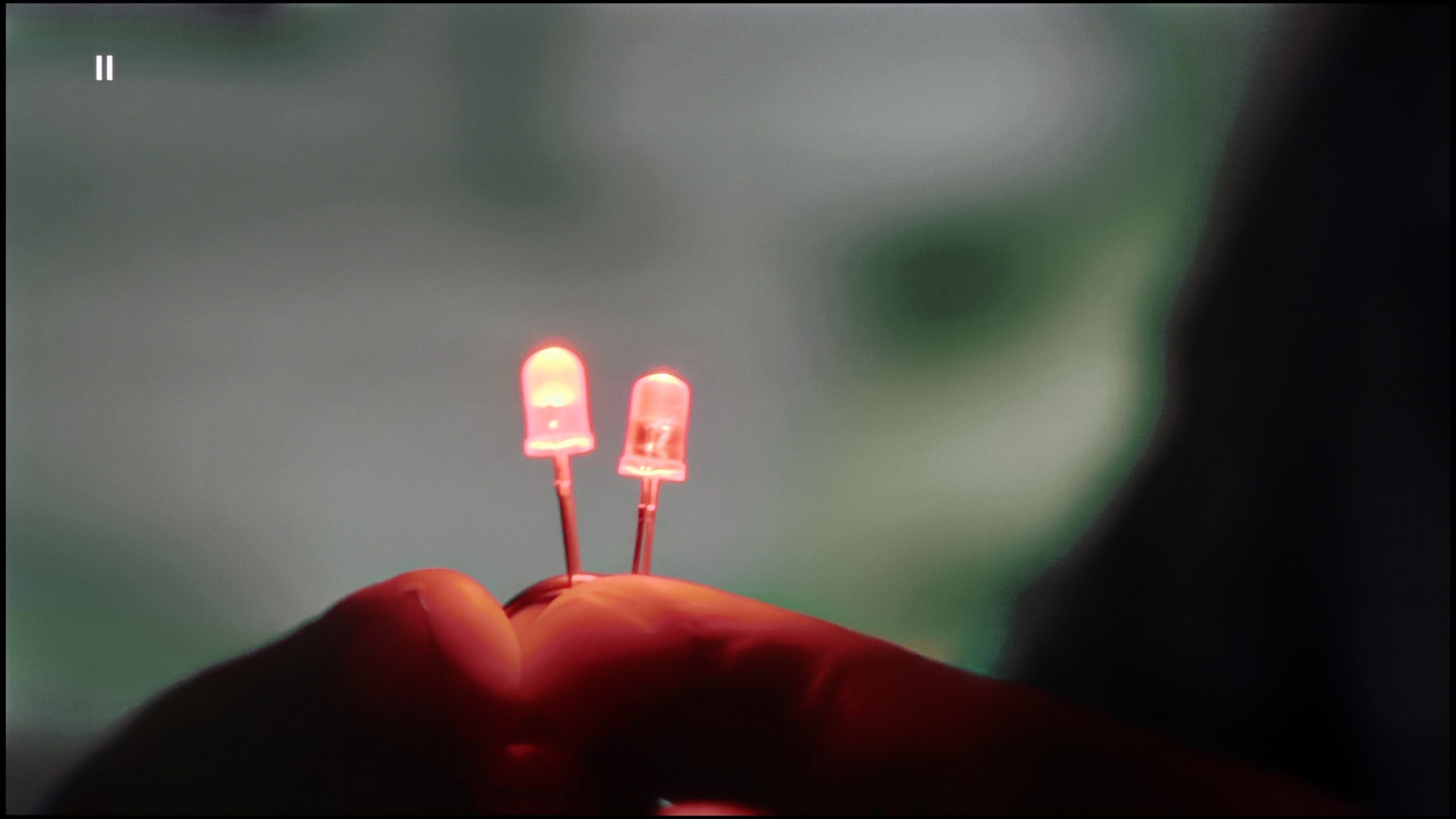
Image without overscan on the SD signal


When it comes to the function of smoothing tonal transitions in lower quality materials, the "smooth and gradient image" feature in Hisense E7NQ PRO unfortunately does not impress. At the lowest setting, the change is hard to notice at all – it is rather a cosmetic improvement. Switching to "Medium" mode yields a noticeable effect, but it is still nothing special, and in the process, the television begins to excessively interfere with other elements of the image, which can look unnatural.
Moreover, image scaling is rather average. On the test screen, where a portrait of a model and text are displayed, slight jagged edges are visible, making the overall appearance less smooth and aesthetically pleasing than one would expect in this class of device. It's simply difficult to talk about truly effective improvement in the quality of lower resolution.
Upscaling and digital image processing in the LG G5 are quite impressive. The television handles lower quality content very well, especially when the "Smooth Gradation" feature is set to a low level. In this mode, it effectively removes unwanted artifacts and issues with visible tonal transitions. It may also slightly smooth out some desirable details, such as the subtle texture of clothing or skin, but importantly – it does not remove film grain, so it's difficult to speak of a serious compromise here. This is one of those options that is definitely worth enabling.
The G5 also performs well with upscaling, which improves the quality of older materials. The test image with the model looked really solid – slight jaggedness was visible, but that's an effect that cannot be completely avoided. Additionally, there were no problems with overscan, which – contrary to appearances – is not at all obvious, even in 2025.
Blur and motion smoothness
7/10
9/10

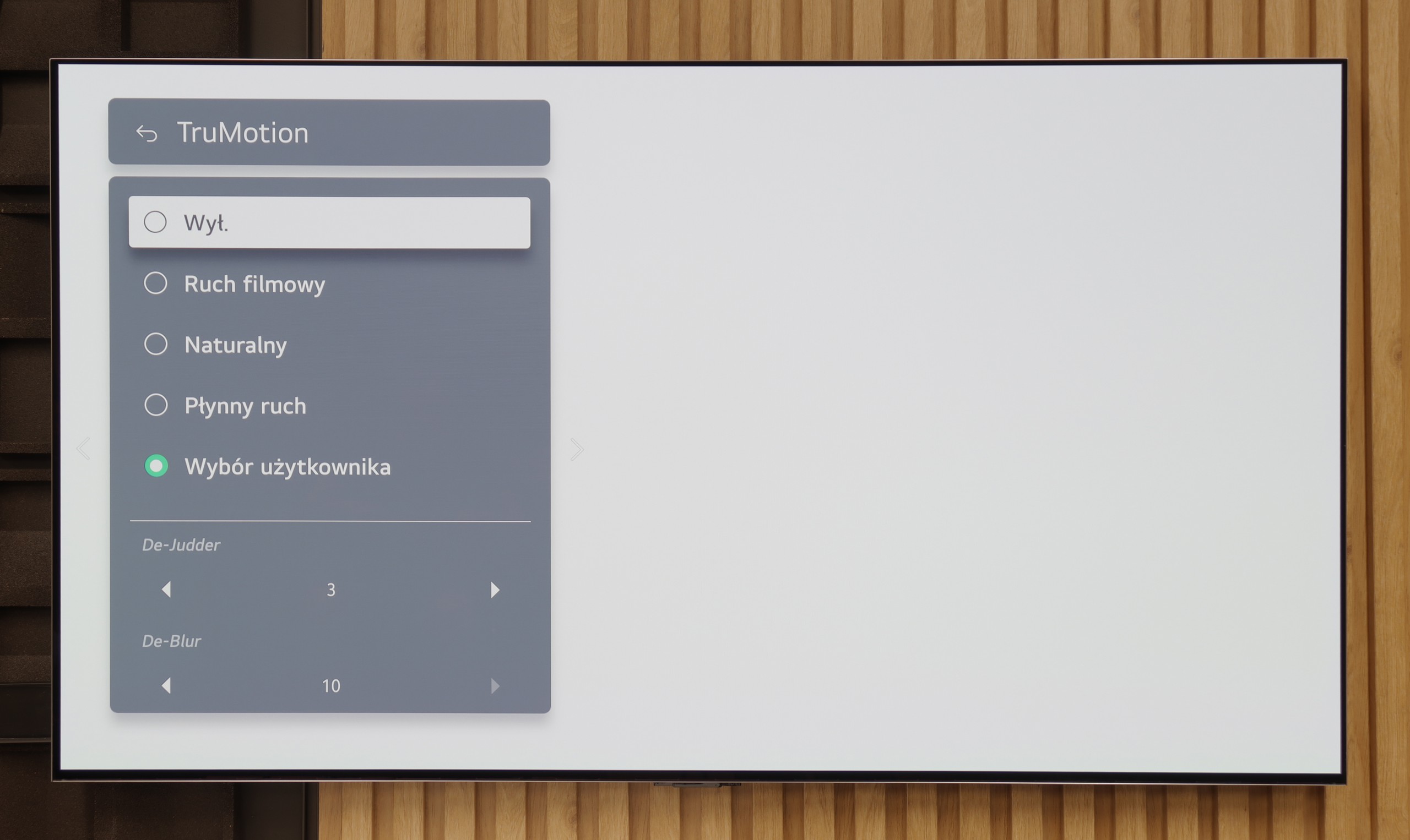
Blur (native resolution, maximum refresh rate):






Blur (BFI function enabled):
Image flickers in this mode



Smużenie ():
Smużenie (4K 165Hz):



Thanks to the use of a 144 Hz panel, E7NQ PRO performs excellently with nearly every type of content. Whether we are watching fast-paced matches, dynamic games or action films – the smoothness of motion leaves a good impression. When it comes to films, the manufacturer has equipped the television with two key tools: "motion blur reduction" and "judder reduction". Each of these functions can be adjusted on a scale from 1 to 10.
At lower values, the processing is subtle, barely noticeable, and gently smooths out motion without compromising the cinematic quality of the image. The higher we move up the scale, the more the television interferes with the presented material, smoothing out motion more intensely, and consequently – minimising any judders or micro-cuts. Conversely, the highest settings can resemble the so-called "soap opera effect", which makes the image appear excessively smooth, slightly losing its filmic atmosphere. However, with such a scale, we can find a happy medium, adjusting the smoothness of motion to our own preferences.
The motion smoothness on the LG G5 is simply phenomenal. The television is equipped with a 165 Hz refresh rate panel, and this, combined with the instant response time of the OLED matrix, delivers incredible results. The image does not tear or stutter like on traditional LCD televisions. Like most LG models, the G5 is equipped with a motion smoother, which can be useful when watching films – we are, of course, referring to the TruMotion mode. With the "De-Blur" and "De-Judder" sliders, we can adjust the smoothness of older materials according to our own preferences, whether we want to maintain the characteristic film stuttering or lean towards a more fluid, television-like effect.
Console compatibility and gaming features
8.5/10
10/10
- ALLM
- VRR
- VRR range48 - 144Hz40 - 165Hz
- Dolby Vision Game Mode
- Correct implementation of HGIG
- 1080p@120Hz
- 1440p@120Hz
- 4K@120Hz
- Game bar

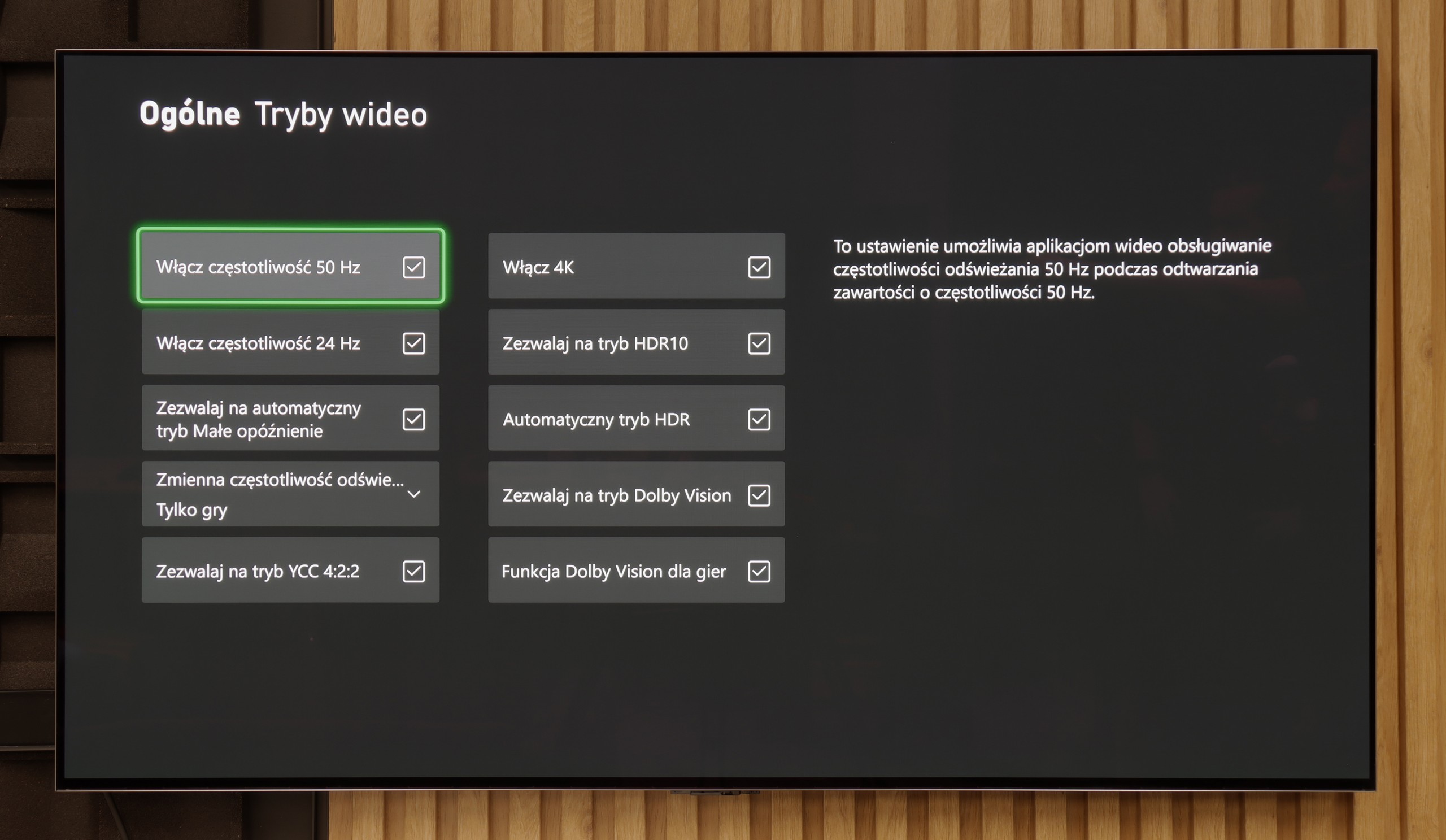

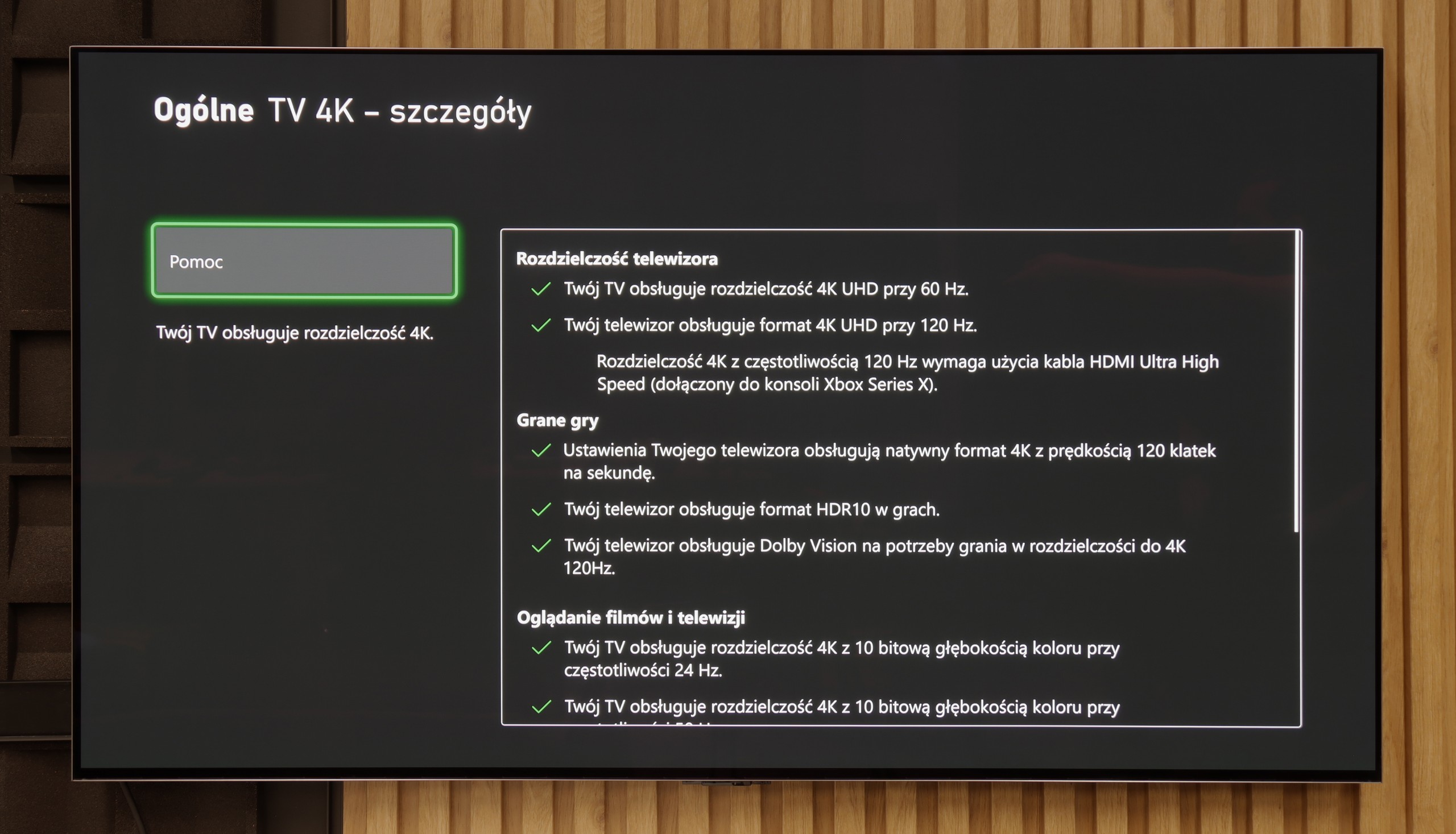

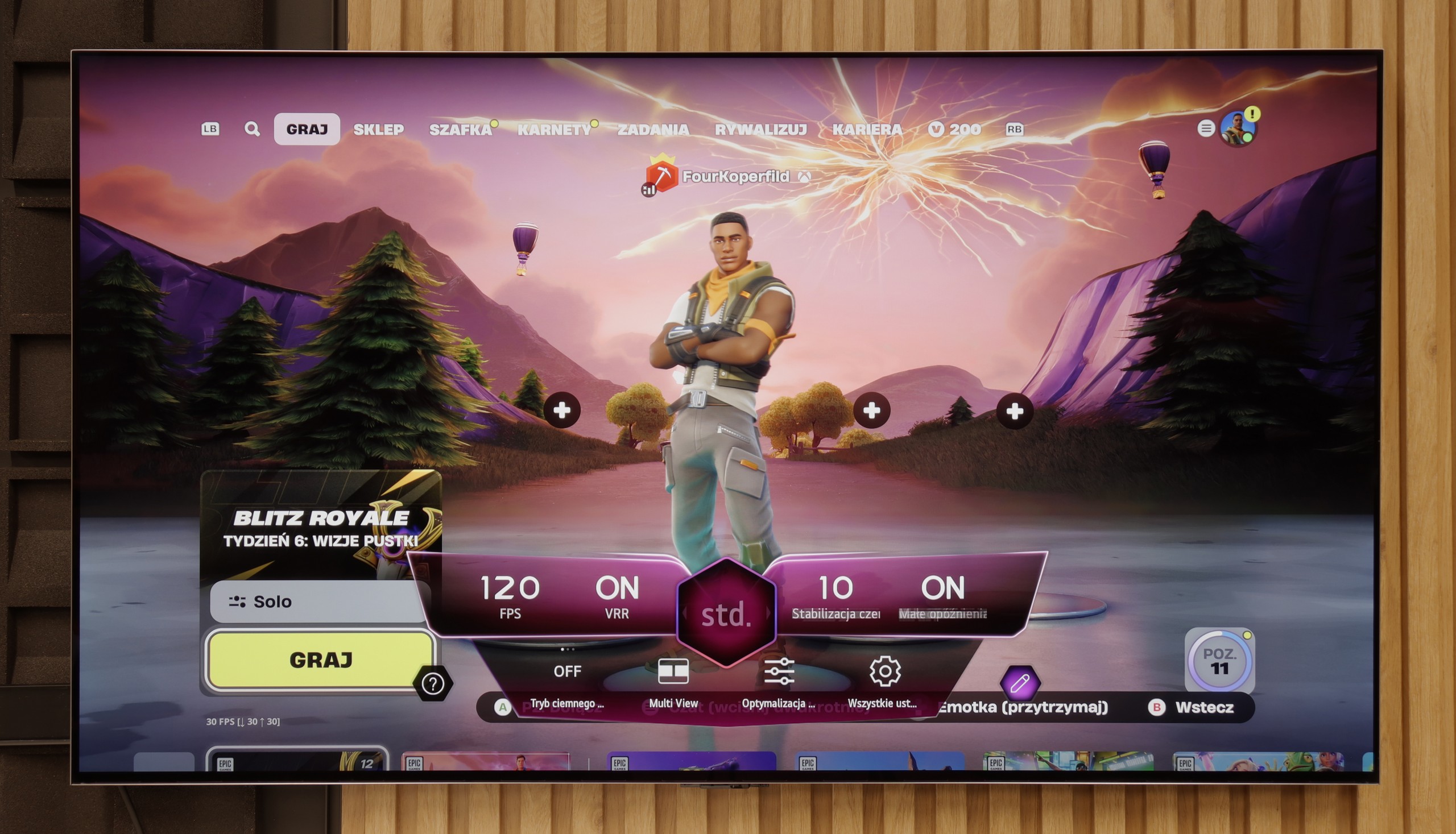

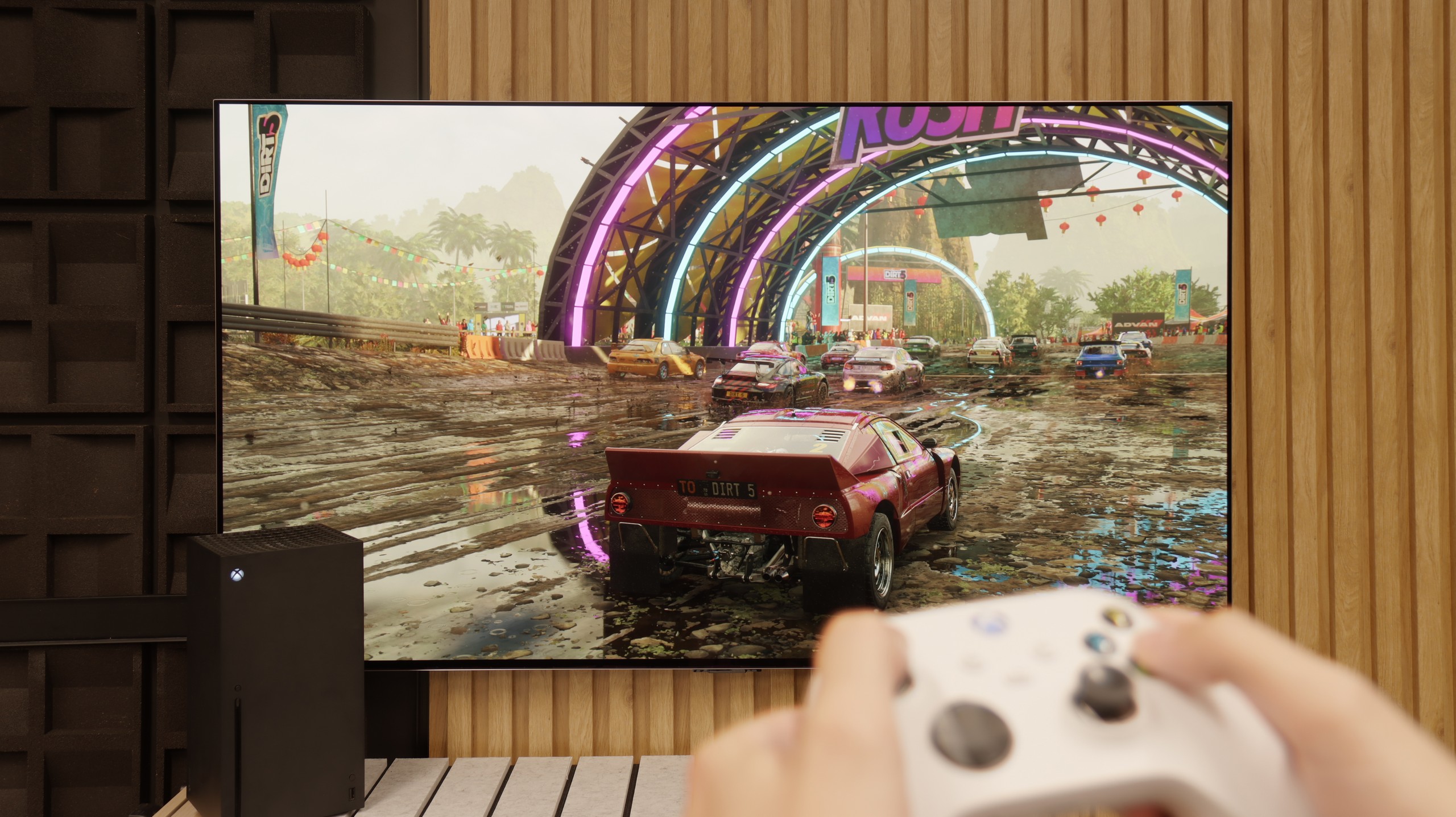
If we sometimes enjoy turning on the console and immersing ourselves in the world of games for long hours, E7NQ PRO can make quite an impressive impact. Thanks to the 144 Hz refresh rate, gameplay is surprisingly smooth, and support for HDMI 2.1 and VRR ensures that the picture doesn't 'tear' even during the most dynamic actions. Additionally, there's ALLM, which automatically sets the lowest latency as soon as we switch to the console – so we don't have to fiddle with the options ourselves.
A major plus is also the ability to run games in Dolby Vision, making colours and contrast simply look better. Hisense has also added a clear 'gamebar', allowing us to constantly monitor the most important parameters and change settings without leaving the game. The only thing we might regret a bit is the lack of HGIG support. While it may not be a crucial element, it could matter to some gamers aiming for the most faithful representation of the creators' vision. Nevertheless, in practice, the E7NQ PRO performs excellently and provides truly enjoyable gaming experiences.
Features for gamers? Perfect. That should be sufficient for you to know what level we are dealing with here. The G5 is a television designed with gamers in mind, so we will find literally everything you could expect from a gaming screen. There is a Game Bar, there is support for high resolutions with high refresh rates – that is, 4K at 120 Hz, and even more, as the panel has a refresh rate of 165 Hz (which PC gamers will benefit from). The television supports variable refresh rate (VRR), automatic low latency mode (ALLM), and also correctly handles HDR in games thanks to the HGiG function. All of this adds up to one of the best sets of gaming features available on the market. Well done, LG.
Input lag
9.9/10
9.9/10
SDR
HDR
Dolby Vision
In this regard, Hisense E7NQ PRO really delivers. At a frequency of 60 Hz, we recorded around 15 ms, and at 120 Hz, the latency drops even to 6 ms, allowing for very quick response and smooth control in games. It is also worth mentioning that even in Dolby Vision mode, the input lag does not increase drastically. This means we can enjoy better image quality without having to sacrifice responsiveness, which will certainly please any avid gamer.
The input lag on the LG G5 is incredibly low. The reaction time to our actions – whether we're playing with a controller, keyboard, or mouse – is almost perfect. The controls are instantaneous, and the game responds exactly when we expect it to. The Dolby Vision Gaming mode does introduce slightly higher latencies, but even then it's hard to nitpick – in the worst case, the values hover around 20 ms, which for most gamers will be practically unnoticeable.
Compatibility with PC
7.6/10
8.8/10

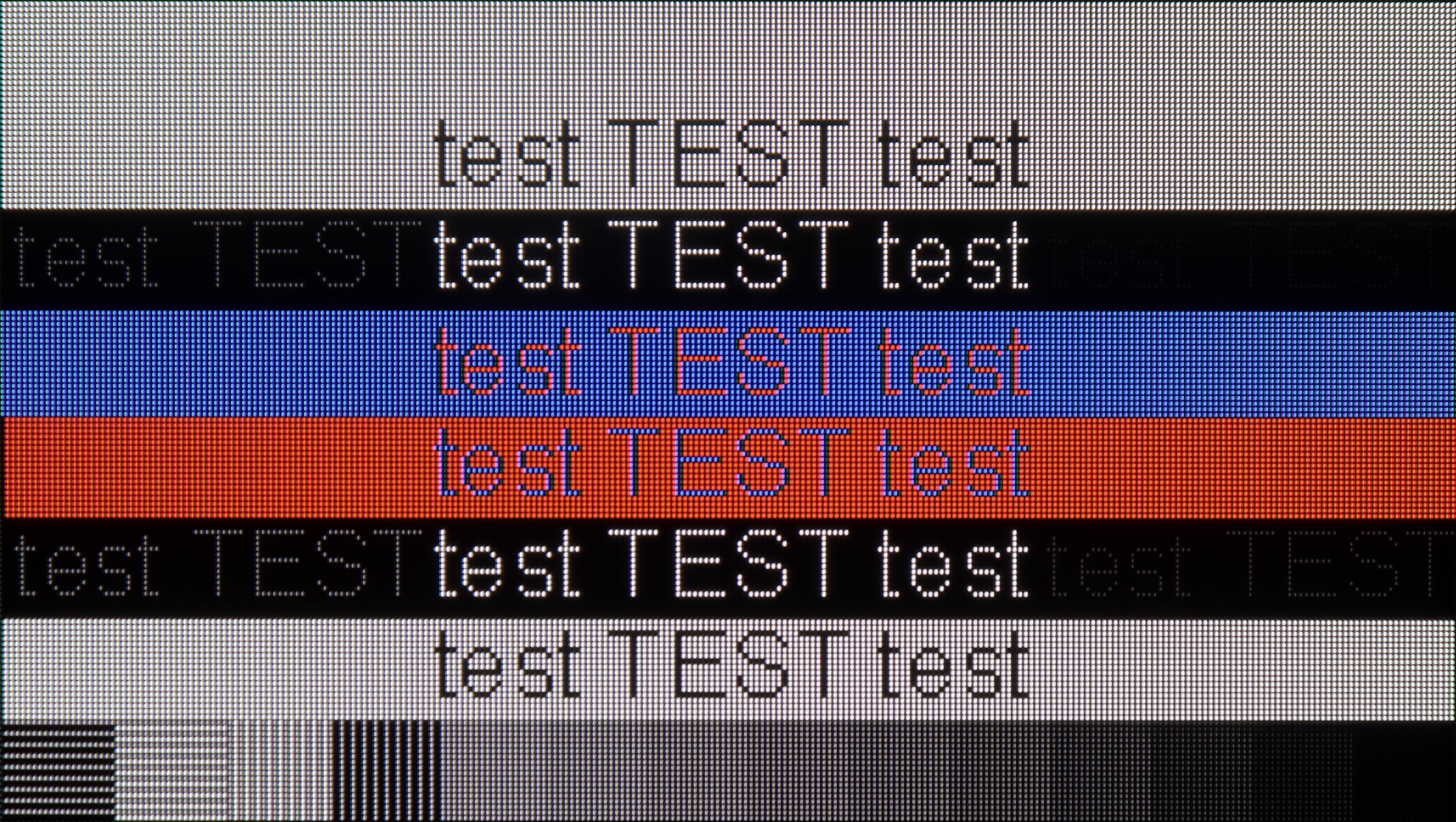
By connecting the E7NQ PRO to a computer, we will have no reason to complain. The overall readability of the fonts is quite good, although with very thin, horizontal lines (the so-called “serifs” of letters) we noticed a slight dimming. This is not a major issue, but it's worth mentioning if we plan to spend long hours in text editors or browsers.
As for gaming on PC, the television shows its true colours. Support for G-Sync, connection to a 144 Hz panel, and low input lag ensure that even the most demanding titles run smoothly and responsively. As a result, we have a screen that will work well not only with a console but also as a solid “window” to the world of PC entertainment.
Collaboration with a PC? Nearly perfect. The television, as we mentioned earlier, has fantastic features for gamers – including those using a PC. Onboard, we find full G-Sync certification, a 165 Hz panel, and a super-fast input lag of around 5 ms. Thanks to the correct implementation of chroma 4:4:4, fonts are very easy to read – both the smallest and the largest. Although due to the WRGB subpixel layout, there may be slight shadows around the characters, for most users this effect will be virtually unnoticeable. The G5 excels as a screen for work, entertainment, and gaming – also from a computer.
Viewing angles
6.5/10
7.5/10
In the case of Hisense E7NQ PRO, the viewing angles are definitely a strong point, thanks to the IPS panel. This means that when we look at the screen even from a significant angle, the colours and brightness do not "wash out" as much as they do in televisions with a VA panel. Of course, compared to OLED or QD-OLED screens, where the image remains practically unchanged from every angle, IPS still falls short. Nevertheless, among LCD televisions, it is hard to find a solution that guarantees viewing angles as good as those offered by IPS. Unfortunately, everything comes at a cost – in this case, one has to come to terms with average blacks and lower contrast.
The viewing angles on the LG G5 are very good, mainly due to the use of a WOLED panel. It's hard to find fault here – the image does not significantly lose brightness or quality even when viewed from the side. However, it should be fairly noted that there is a slight regression compared to the G4 model. The predecessor used an MLA panel with micro-lenses, which offered slightly better light distribution. Also, compared to QD-OLED panels, the angles are worse. Nevertheless, the overall perception of the image at an angle remains very good and should not be an issue in everyday use.
TV efficiency during daytime
6.2/10
8/10

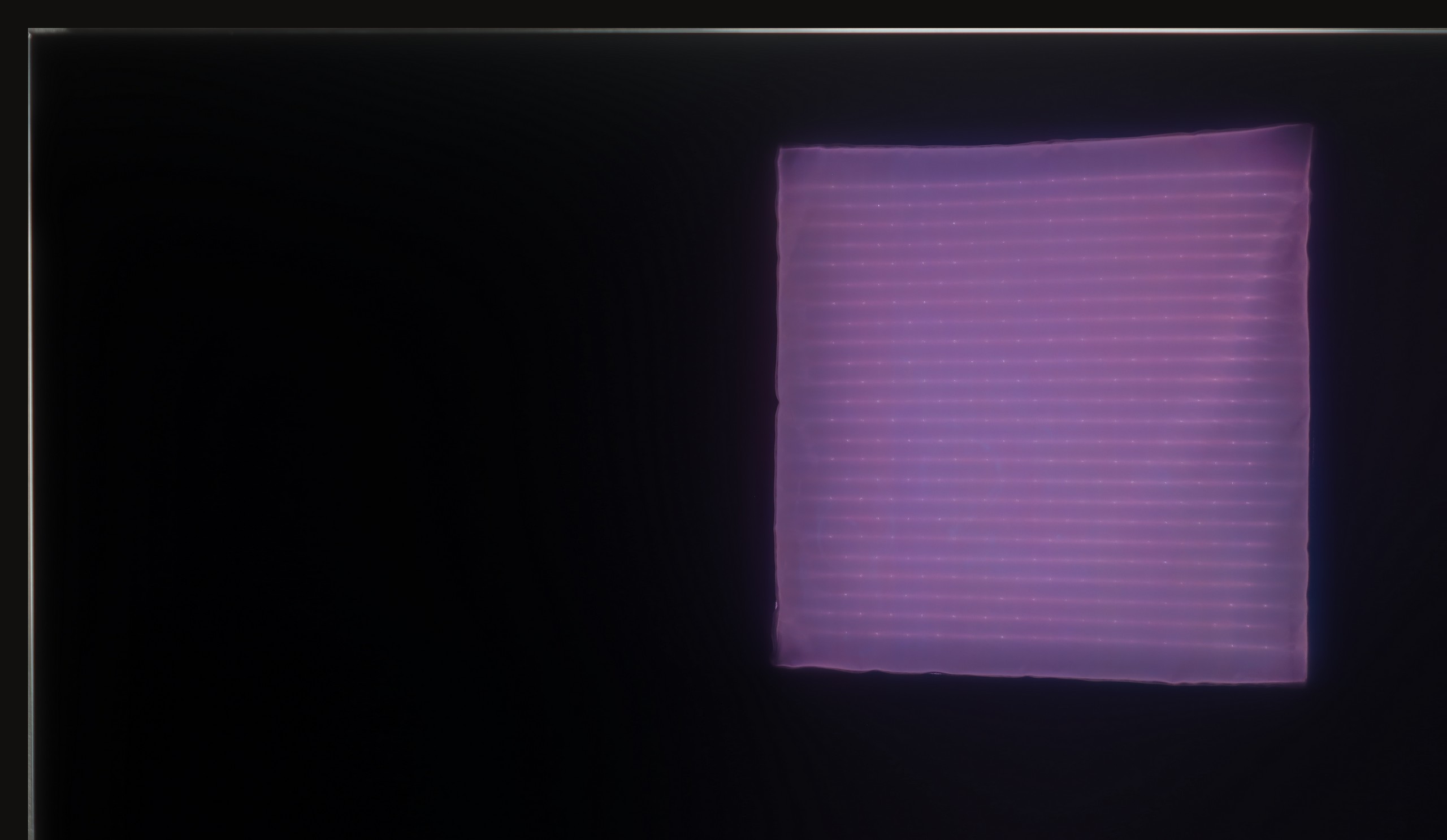


Matrix brightness
Average luminance SDR
LG OLED G5: 810 cd/m2
Hisense E7NQ PRO: 478 cd/m2
On a bright day, E7NQ PRO performs quite well. The "satin" display diffuses light effectively, preventing reflections and glares from turning into distracting "spots" on the screen. With an average brightness of around 500 cd/m², you can comfortably watch television in a sunlit room without much struggle to see details or clear content. It's perhaps not at the level of the highest premium models, but in everyday use, it still performs quite decently.
The LG G5, thanks to its very high brightness, performs excellently in bright rooms. Even with SDR content, the average brightness value is around 800 nits, which is significantly more than in standard televisions. It will handle a bright living room with ease. Although the panel averages moderate reflection suppression, it still maintains significantly better blacks and colours during the day than QD-OLED panels or those with a matte finish. The G5 will perform well in very sunny rooms – unless you truly cannot stand reflections on the screen. In that case, you will need to use blinds or consider purchasing a television with a matte panel.
Details about the matrix
Subpixel Structure:

Panel uniformity and thermal imaging:


TV features
8.9/10
8.5/10
- HDMI inputs2 x HDMI 2.0, 2 x HDMI 2.1 48Gbps0 x HDMI 2.0, 4 x HDMI 2.1 48Gbps
- Other inputsRCA (Chinch)IR (remote)
- OutputsToslink (Optical audio), eARC (HDMI), ARC (HDMI), Mini-Jack (Headphones)Toslink (Optical audio), eARC (HDMI), ARC (HDMI)
- Network InterfacesWi-Fi 2.4GHz, Wi-Fi 5GHz, Ethernet (LAN) 100MbpsWi-Fi 2.4GHz, Wi-Fi 5GHz, Ethernet (LAN) 100Mbps
- TV receptionDVB-T, DVB-T2, DVB-S, DVB-S2, DVB-CDVB-T, DVB-T2, DVB-S, DVB-S2, DVB-C
Classic features:
- Recording to USB (terrestrial TV)
- Recording programming
- Picture in Picture (PiP)
- RF remote control (no need to aim at the screen)
- Backlit remote control
- Teletext
- Audio only mode
- Bluetooth headphones support
- Simultaneous Bluetooth headphones & TV audio
Smart features:
- AirPlay
- Screen mirroring (Windows Miracast)
- Voice search
- Voice search in native language
- Ability to connect a keyboard and mouse


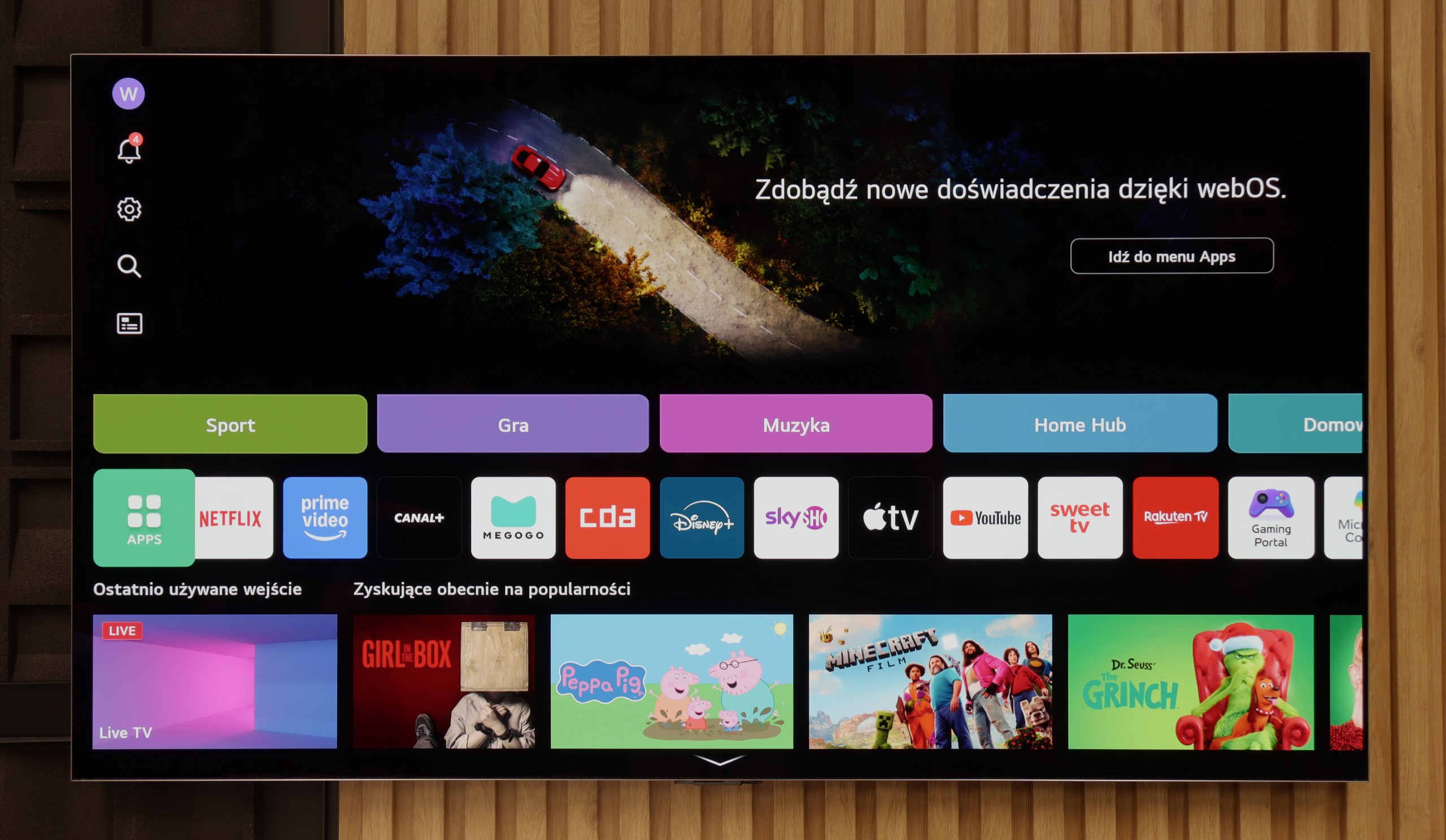
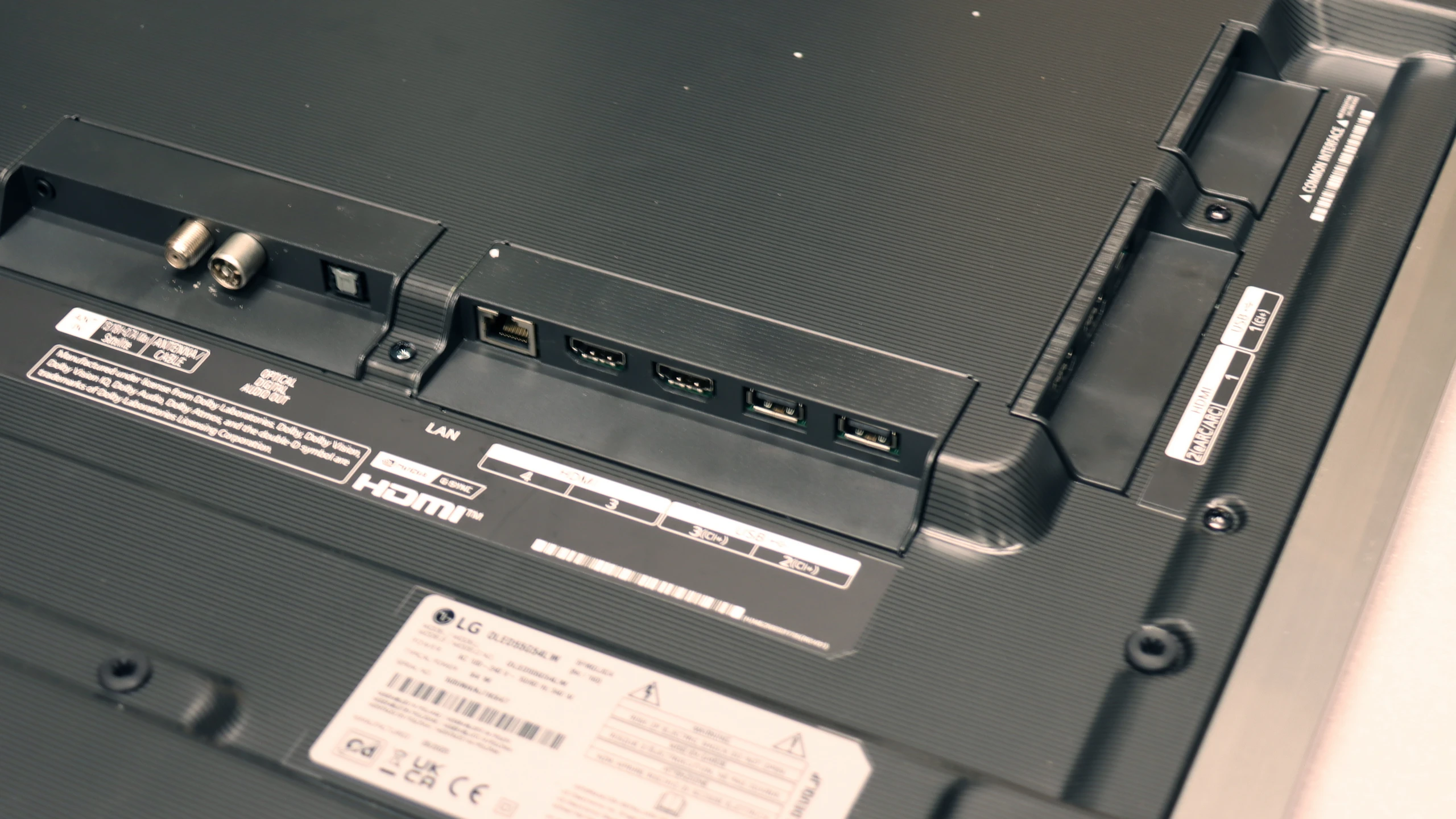
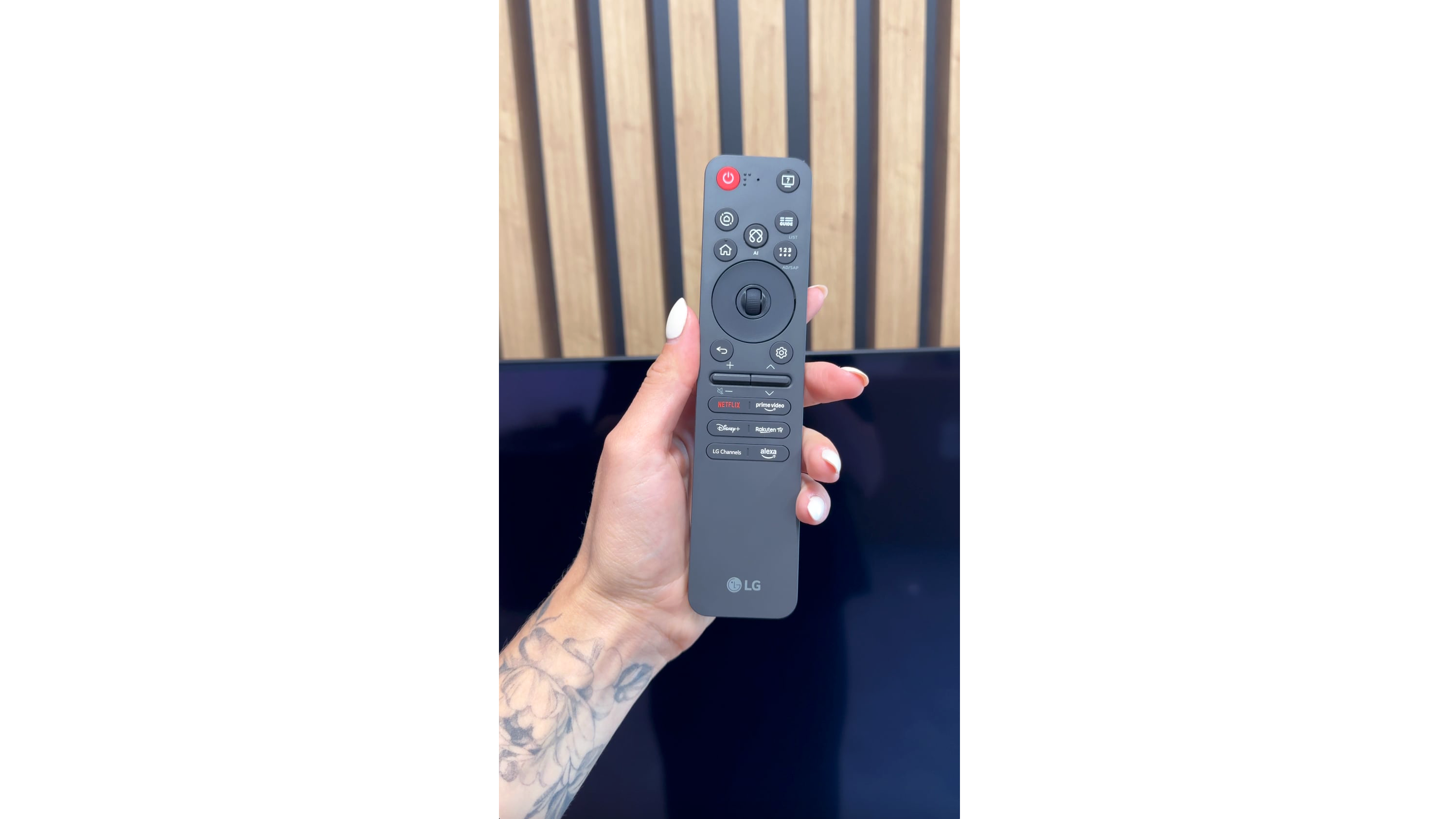
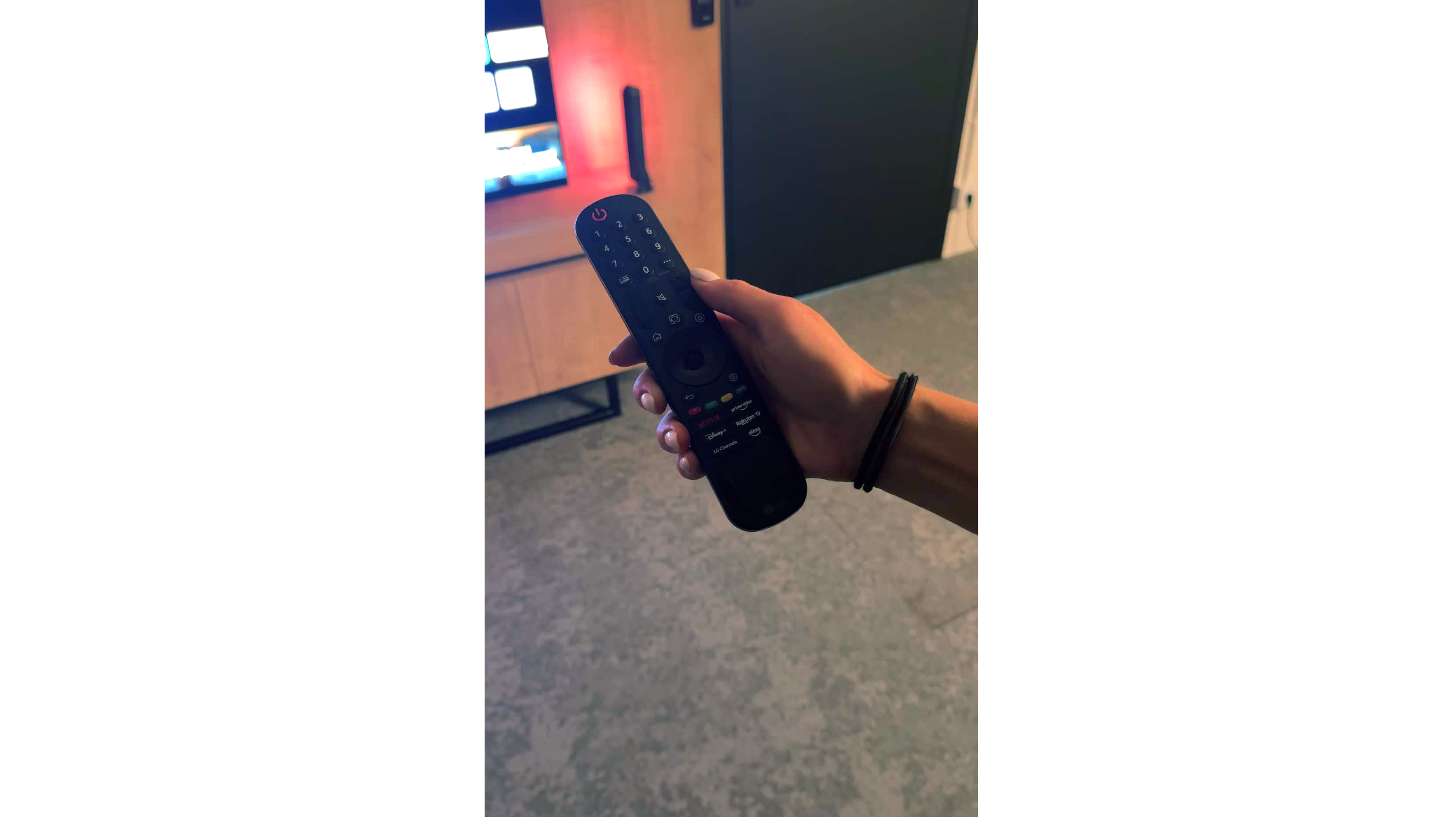
Hisense E7NQ PRO operates on the VIDAA system, which has recently made significant progress. Most popular applications can be found here, although unfortunately, some music platforms like Spotify or Tidal are missing. Nevertheless, navigating the menu is quite enjoyable, and the responsiveness is at a satisfactory level. Yes, there are occasionally minor "stutters," but this is not something that will overwhelm our daily usage experience.
On the plus side, we can appreciate the support for voice search in Polish, which makes it easier to find favourite content without the tedious process of typing letters one by one. The television also offers plenty of additional options: we can record programmes, use AirPlay and mirroring, as well as enjoy extensive wireless connectivity options (Wi-Fi and Bluetooth). Perhaps it lacks a backlit remote or Picture-in-Picture (PiP) mode, but these are rather niche features, so few will truly feel their absence. In everyday use, we simply have a solid foundation of useful tools and convenient solutions.
Classic features
LG G5 has a lot to offer when it comes to classic television features. Aside from the inability to watch two sources (PIP), the television handles everyday usage excellently. There are no issues connecting external Bluetooth devices, such as headphones, and the EPG interface is very clear and understandable – even for those who are not particularly tech-savvy.
Smart TV Features
The Smart TV in the G5 operates on the WebOS system – it is the heart and brain of the entire television. With the Magic remote, using the G5 is truly enjoyable. We control the cursor on the screen with wrist movements, which somewhat resembles using a mouse in the air. The system itself is highly developed and offers everything one could expect: AirPlay, screen mirroring, voice search, and voice commands – all of this works smoothly and without delays. Without a doubt, it is one of the best operating systems in televisions on the market.
Note:
During our tests, we had virtually nothing to complain about – perhaps with one exception: the confusion surrounding the remote. Depending on the market and the specific version of the model, you may encounter the new, minimalist Magic remote (without a numeric keypad) or the older version with a full set of buttons. We tested the G54LW model, which came with the new Magic remote, but it's hard to say how the situation looks in other variants. It may be a similar situation to the LG C5 series, where the addition of the remote also depends on the specific market.
Playing files from USB
5.2/10
9/10
Supported photo formats:
Maximum photo resolution:

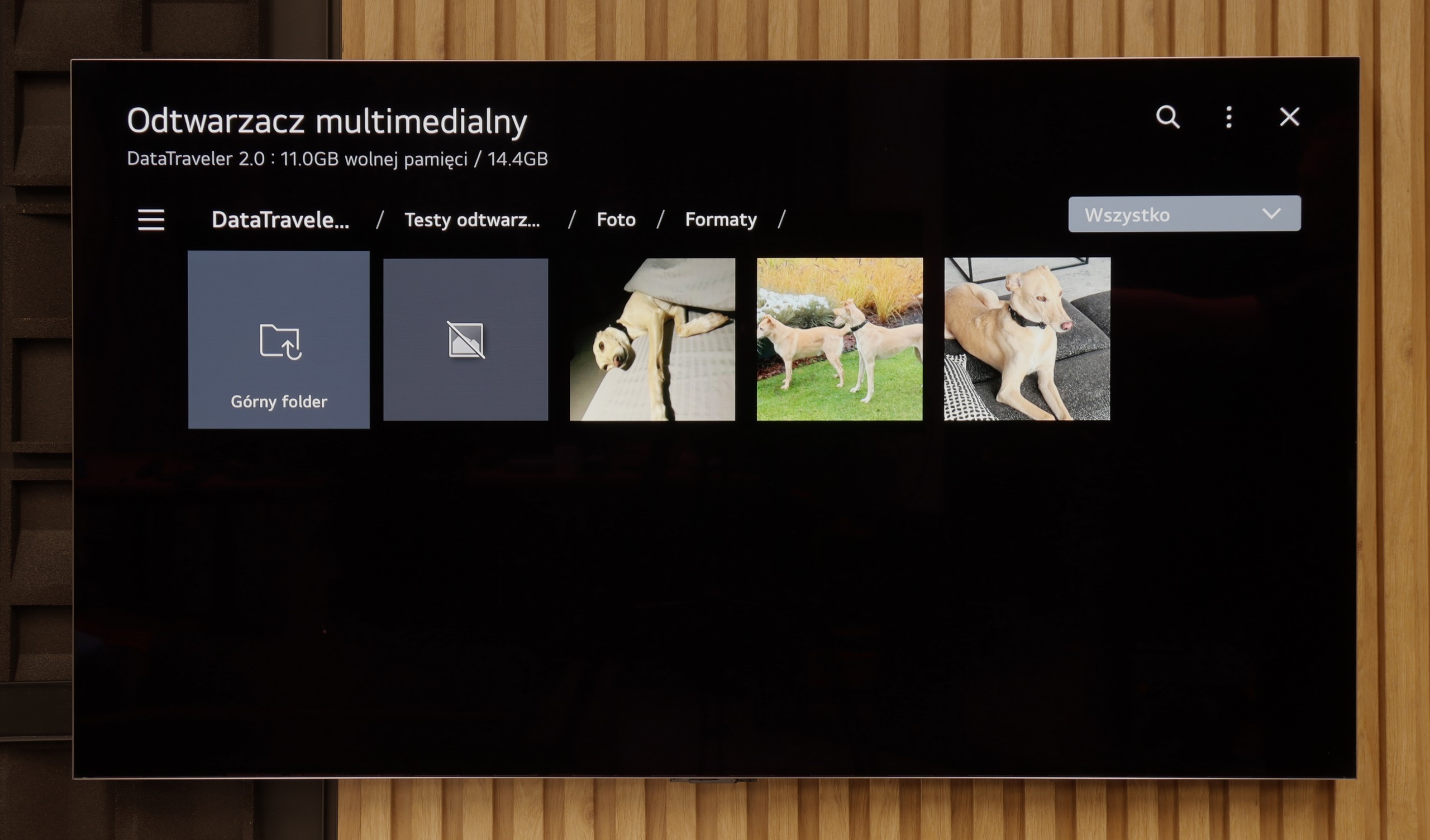
If we are counting on comfortable viewing of films with subtitles directly from a pendrive, we may unfortunately be disappointed. Just like with the previously tested A7NQ, we encounter a rather peculiar situation here: the television does not display subtitles, even if we correctly place them on the device and try various formats. Paradoxically, we find options to change the colour and appearance of the font, but as they say – what's the point if we still won't see anything?
In the case of other files, such as photos or music, the E7NQ PRO manages without major problems, playing the most popular formats without a hitch. Unfortunately, for those who would like to use the television as a multimedia player, the lack of functioning subtitles is quite a nuisance.
The built-in media player in the LG G5 is really very good. It supports practically everything you might expect from a modern television – most popular formats work without any issues, and the app's performance is swift. Our only disappointment was the lack of support for very high bitrate HEVC 85 Mbit/s files – similar to the C5 and B5 models. Interestingly, the same file played flawlessly on last year's LG OLEDs, so it's hard to say what has caused this change. Nevertheless, in everyday use, the G5 will handle the vast majority of content without the need to connect any external devices for media playback.
Apps
7.7/10
9.1/10














































Sound
7/10
8.7/10
- Maximum volume--
- Dolby Digital Plus 7.1
- Dolby True HD 7.1
- Dolby Atmos in Dolby Digital Plus (JOC)
- Dolby Atmos in Dolby True HD
- DTS:X in DTS-HD MA
- DTS-HD Master Audio
When it comes to the built-in speakers, Hisense E7NQ PRO pleasantly surprised us. Of course, it is not on the level of a proper soundbar or home cinema system, but in everyday conditions, it performs quite well. During our tests, the dialogues remained clear, and the sound was sufficiently clean and spacious, so there was no immediate need to invest in additional audio equipment.
It also deserves credit for supporting multiple audio formats – from Dolby Atmos to the less common DTS:X. As a result, if we come across the right source materials, we can expect a more immersive, spatial experience. Although in terms of sound, it is still primarily at the level of a decent basic setup, Hisense E7NQ PRO should satisfy most users who simply want to turn on the television and hear clear, unblemished sound.
The sound on the LG G5, considering its slim profile, is truly phenomenal. When listening to music, one can feel a light, pleasant bass, and in films, the dialogue is clear and audible – it does not get lost even in dynamic scenes. Unfortunately, a certain disappointment is the lack of support for the DTS format, which LG used in its older models. It’s a shame, as many home cinema enthusiasts may feel this as a step backwards.


